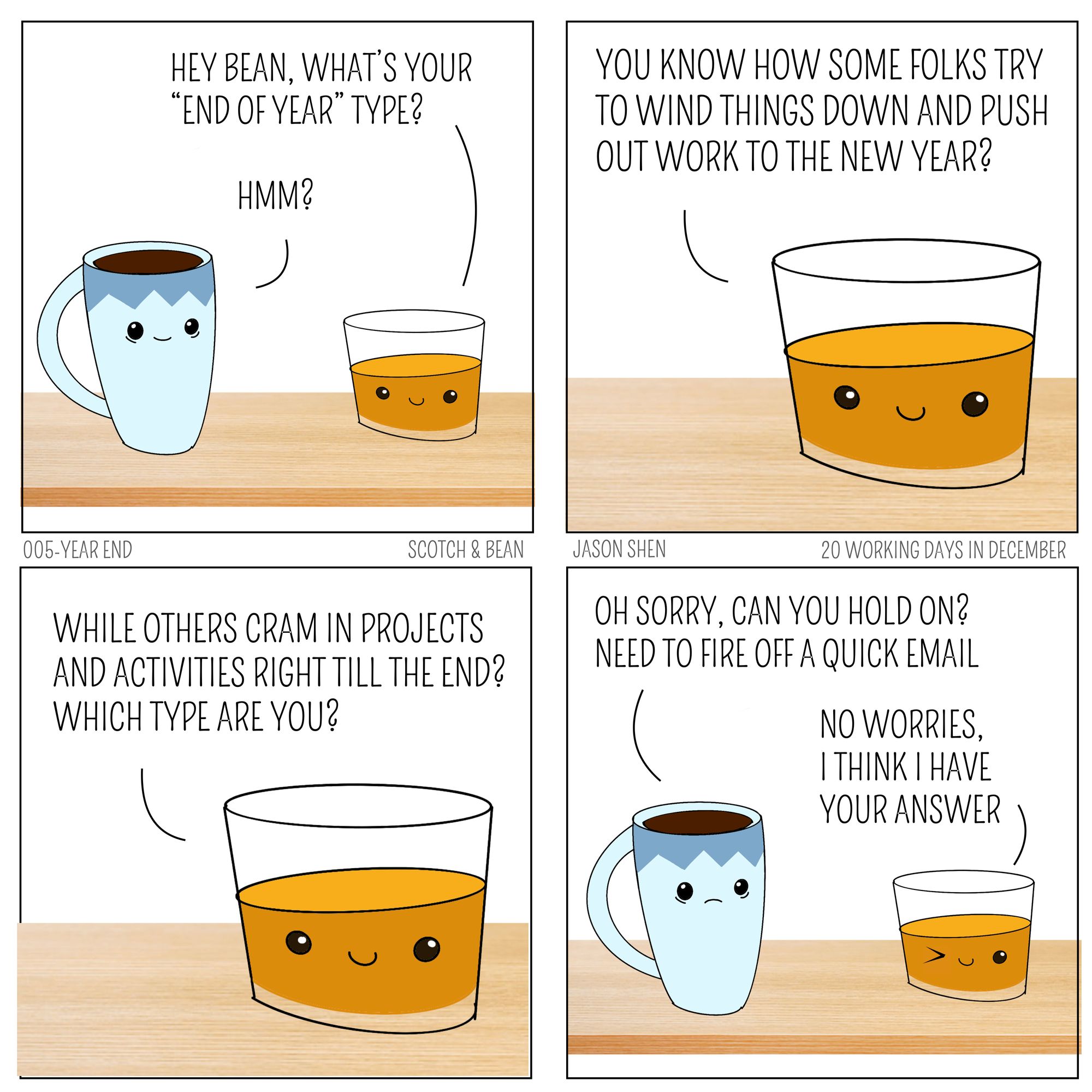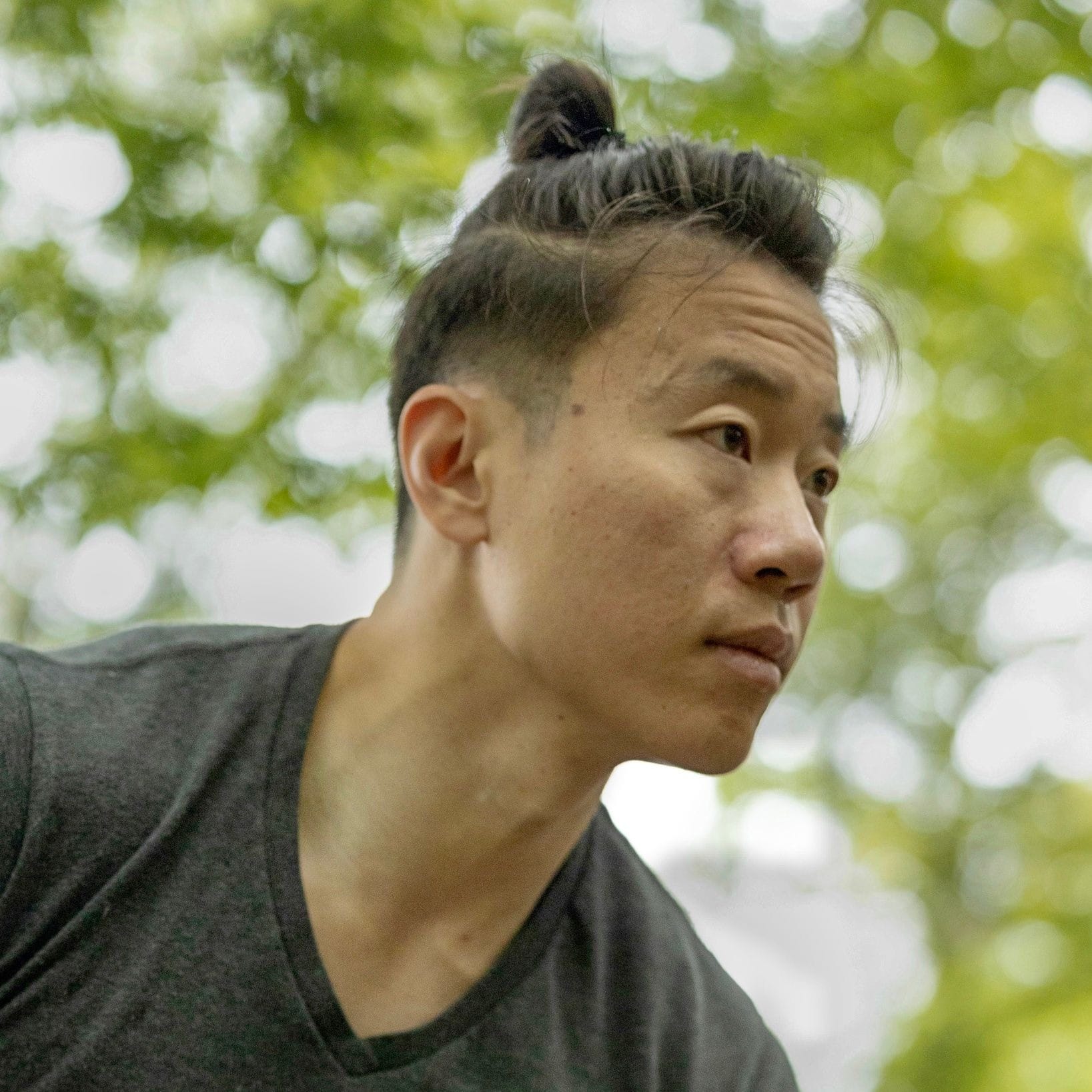Hey friends,
This is the 33rd edition of Making Connections, where we take a random (illustrated) walk down tech, fitness, product thinking, org design, nerd culture, persuasion, and behavior change.
If you got this from a friend (lucky you - what good friends you have) why not subscribe and join in the fun?
🖼 Visual: Year End Type

Today’s comic is a variation of a Twitter thought I had recently. I aspire to be the former, but I’m more the latter. What about you?
🧠 Thought: How Terror Management Theory Explains Both Anti-Maskers & Racial Justice Protests
Some time ago, I came across terror management theory, which is the idea that human beings spend a lot of energy doing things that reduce the existential awfulness of death. This idea explains everything from why people seek to make great art or name buildings / scholarships in their name, to drinking, mindless entertainment, to cult participation. As a kid, I definitely spent a lot time being deeply afraid of dying, not the pain of death, but the fact that I would some day not exist at all.
Then recently I came across an excellent paper in the Journal of Humanistic Psychology that explains how terror management theory explains anti-maskers (something that the progressive educated crowd finds maddening) as well as the surge in protests that happened this summer, which many conservatives pointed out seemed hypocritical given the seemingly large number of people that were sometimes packed in close quarters.
[Terror Management Theory] posits that an inherent consequence of humankind’s sophisticated cognitive abilities is awareness of the inevitability of death. Awareness of death in an animal with an inherent proclivity for self-preservation gives rise to an ever-present potential for existential terror…
Research has supported a network of converging hypotheses derived from TMT. This research shows that (1) reminders of death (mortality salience) increase commitment to one’s worldview, self-esteem, and relationships, and increase defense of these entities when threatened; (2) bolstering self-esteem, worldview, or relationships makes one less prone to anxiety and anxiety-related behavior in response to threats; (3) threats to worldview, self-esteem, and relationships increase the accessibility of death-related thoughts; and (4) self-esteem striving, cultural worldview defense, or affirming close relationships in response to mortality salience reduce death thought accessibility and the need for further terror management defenses
The idea that when you’re scared of dying, you fall back on your core beliefs and identity makes a lot of sense. Why trust someone or try something new? Similar to why it’s easier to pitch someone on a new idea when they aren’t feeling stressed or anxious. And finally, why those who are lionized by their peers are more brave—think the respected commander fighting at the battlefront: they know their life has meaning and if they die, they’ll be celebrated as a hero.
TMT posits that people manage death anxiety with two distinct systems, referred to as proximal and distal defenses (Pyszczynski et al., 1999). When death-related thoughts are conscious (in current focal attention), proximal defenses are activated to suppress such thoughts or push death into the distant future by denying one’s vulnerability to things that could kill, or intending to engage in healthier behavior to ensure a longer life. However, when death-related thoughts are on the fringes of consciousness (no longer in focal attention but still highly accessible), people activate distal defenses focused on maintaining faith in their cultural worldview and enhancing self-esteem.
These two systems are important to note: if death is in the forefront of the mind (proximal), you need to deal with it directly: either by actually living more safely, or downplaying the risk in your mind through various kind of rationalizations. But even if it’s in the back of your mind (distal), your behavior still changes in different ways.
The world has suddenly become an even more chaotic, confusing, and hostile place, in which death lurks around every corner, and people struggle to maintain meaning and self-esteem. People are living with the very real threat of death from the pandemic, combined with challenges to their worldviews, loss of jobs, impediments to career goals, and isolation from friends and family who normally validate one’s significance. From a TMT perspective, it is currently far more difficult for virtually all of us to manage the terror of death.
This is an important point. A lot of the folks who have said things like “open America back” aren’t necessarily just callous, stupid people who don’t respect human life. They may be trying to alleviate a very real kind of suffering that comes from being unable to connect with family, friends, coworkers, and gain the kind of psychic meaning that even unpleasant labor provides.
Another form of proximal defense involves minimizing one’s perception of the threat. This has taken the form of arguing that the virus is not nearly as contagious or lethal as health experts claim it to be (Srikanth, 2020), or that it is only lethal for the elderly or those already at-risk of dying from other diseases (Fox et al., 2020). Others have trivialized the virus by comparing it to common illnesses such as the seasonal flu (Ritter, 2020), focusing on other common causes of death (McGinty, 2020), or viewing the publicity given the pandemic as originating in a politically motivated conspiracy (Romano, 2020). When sky-rocketing death statistics and vivid instances of contagion and mortality in the media make it hard to deny the problem outright, people sometimes claim that death rates are inflated to increase the funding hospitals receive (Nunez, 2020), or to bolster the aforementioned conspiracy to damage government leaders (Brown, 2020; Romano 2020).
[Emphasis added] The anti-masking, the argument that deaths are inflated, they’re all emotionally valid ways of countering a very real fear.
Another, likely more adaptive, form of proximal defense against COVID-19 is to follow the prescriptions for avoiding infection provided by the medical community. This may be the most common proximal response to the pandemic; surveys suggest that 92% of people have followed guidelines for avoiding infection, to at least some extent (Altman, 2020).
Nice to know that despite all the protests, very few people are outright doing nothing about reducing their chances of infection.
One current example of intensified reactions may be the powerful and sometimes violent protests in response to the killing of George Floyd. This was far from the first unjust killing of a Black person by the police, but it has clearly led to the most intense and widespread outrage and protests of any of them. Perhaps it is the final tragic straw that broke the proverbial camel’s back that occurred at a time when people had more time to engage due to shutdowns in response to the virus. But we argue that the background of death thought accessibility due to the pandemic probably intensified these reactions. Fueled by a greater need for terror management, many people jumped fervently onto this cause as a way to feel that they are doing something of value in their lives, when in reality their ability to feel that way has been so hampered by loss of jobs and income, social isolation, and difficulties in making sense of the tragedy and divisiveness that has emerged in the wake of the virus.
[Emphasis added] On the other side, we saw a tremendous wave of walk outs, protests, marches, occupations, and remarkable level of passion for racial justice. I think the authors are correct in saying on top of the existing rightful anger at police violence and systemic racism, there was an added element of being cooped up at home and seeking a cause and affiliation that would give meaning to otherwise empty lives.
Many people have suffered serious, life-altering injuries by “nonlethal weapons” used by police officers to control protests and riots … Interestingly, the individuals who are risking their lives to protest racial inequality tend to hold the same political views as those who believe that social distancing should be practiced (Diamond, 2020; Nguyen, 2020). Thus, these individuals are in a precarious position, where bolstering one’s cultural worldview by protesting racial inequality involves directly, consciously putting oneself in danger of violence and disease.
[Emphasis added] Again, a seeming contradiction (if you care about avoiding death via COVID-19, why are you so eager to put yourself in harm’s way in another situation?) that is explained by TMT.
The full article is available online and it’s very readable: Terror Management Theory and the COVID-19 Pandemic
👉 Check out: Lovingkindness Meditation
Most of us are familiar with mindfulness meditation: where we sit and try to focus on our breath and the present moment. It’s a very neutral experience, like eating plain oatmeal for breakfast: good for you but not very exciting.
Lovingkindess meditation is like adding brown sugar and blueberries to that oatmeal: healthy and delicious. In this meditation, you focus on fostering warm feelings towards yourself and people you love, and building up to strangers and then the whole world. Same benefits of mindfulness meditation plus it feels good!
The Greater Good Science Center at Berkeley has a great introduction, with a guided meditation you can follow in just 15 mins.
This is probably the last Making Connections till 2021. I hope you and your loved ones are safe, healthy, happy, living with ease and free from pain. See you in January!
-Jason
👨🏻💻 About Jason
Jason Shen is a veteran technologist on a mission to rewire our most important algorithms: the ones in our heads. As a serial founder, his companies were backed Y Combinator, Techstars, and Betaworks. As an operator, he’s built products and led teams at Facebook, Etsy, and the Smithsonian. He has bylines in Vox, Quartz, Fast Company, and his TED talk on the future of hiring has been viewed over 4 million times and been translated in 31 languages. A former NCAA gymnastics champion, Jason lives in Brooklyn with his wife, two kettlebells, and many large stacks of books.

